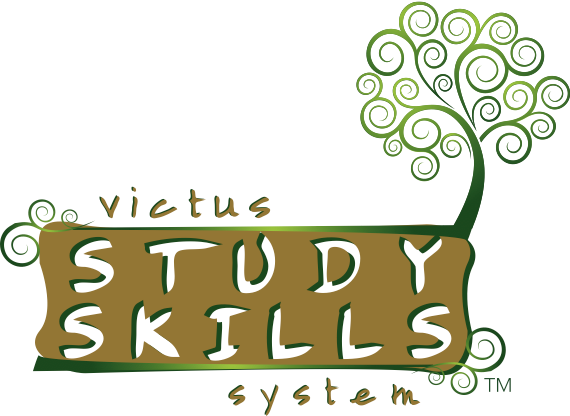 One of my goals in homeschooling my son is to give him the tools and skills necessary to succeed in the big world outside our door. His education isn’t just the accumulation of facts, because face it: no one’s career hinges on his knowing the name of the General who died in the French and Indian War (Braddock). It’s much more important to foster his love of learning and teach him how to find information when he needs/wants it. Along those lines comes Victus Study Skills System. They teach students how to study: reading for information, taking notes in lectures, time management, etc. We received two spiral-bound books that make up the Victus Study Skills System : the Student Workbook ($20) and the Teacher Edition ($40).
One of my goals in homeschooling my son is to give him the tools and skills necessary to succeed in the big world outside our door. His education isn’t just the accumulation of facts, because face it: no one’s career hinges on his knowing the name of the General who died in the French and Indian War (Braddock). It’s much more important to foster his love of learning and teach him how to find information when he needs/wants it. Along those lines comes Victus Study Skills System. They teach students how to study: reading for information, taking notes in lectures, time management, etc. We received two spiral-bound books that make up the Victus Study Skills System : the Student Workbook ($20) and the Teacher Edition ($40).
Why study (or teach) how to study? Up to now I’ve been the controller of my son’s education – I tell him how many pages to read in history, I’ve broken down assignments into daily bits so his 5 paragraph essay will be done when I want it, I’ve given the reminders “You’ve got a math test tomorrow so you better look over the rules on multiplying by a negative.” I won’t always be his teacher though—a college professor may give a term paper assignment at the beginning of the semester and not mention it again till it’s due, a boss may hand over a manual on the new accounting software and expect him to teach himself. My aunt recently shared that perhaps she’d been to lenient in homeschooling my cousin—if he didn’t feel prepared for a test, she’d often postpone it for a day or two. No classroom teacher would make that exception---which my cousin is discovering the hard way in college.
There are 10 lessons in the Student Workbook (:
- Introduction and Study Habits Checklist
- Learning Strengths
- Mission and Goal Setting
- Time Management
- Organization and Study Environment
- PQRST
- Listening
- Note Taking
- Test Taking
- Review
For each lesson there is usually a fill-in-the-blanks page that we filled out during our discussion of the topic (the Teacher’s Edition has the answers filled in). Then is a separate page for the student to work on—this could be filling out an hourly schedule for the time Management lesson or a place for note taking while listening to a brief paragraph about banana plants.
The Teacher Edition (82 pp.) has an Introduction on the philosophy of the Victus System, a section of teacher instructions, a section covering the 10 student lessons, and an appendix with some addition tools and reinforcement exercises.
The Sample Course Plan suggests covering all ten lessons in a 5-day school week. This pacing was much too fast for my 11 year old. We managed to do a lesson per day for the first 5 lessons—these were mostly exercises in self reflection: assessing current study habits, determining learning modalities, setting up a weekly schedule. We would discuss the topic and I would give him the answers to fill in, but I tried to let him work on the project page himself so I wouldn’t influence his opinions/decisions. Such a surprise—I’d always assumed my son was a kinesthetic learner, but the survey showed he learns best visually (he’s still a wiggle worm).
When we got to the heart of learning how to study and I slowed waaaayyy down. (Lesson 6 ) PQRST is a mnemonic to help remember the steps of reading for information: Preview, Question, Read, State, Test. We spent a day on each letter/word –discussing it and then applying it to both our history and science texts. (Lesson 7) Listening while I’m talking or reading aloud is my son’s weakest area—I spent a whole week here alone trying to get 10 minutes of good active listening from him at a time. Right now he’s only tested in math so much of Lesson 9 didn’t apply –but we’ll be reviewing it again in the future. In fact, I’m planning on reviewing the Victus Study Skills at the start of each new school year as we work out the kinks from summer vacation and would recommend it to other homeschoolers to do the same.
The Victus program can be used by all ages (the website has some recommendations for tweaking the program for kids ages 4-7). Students ages 8-10 should be able to work through the Student Workbook with a parent who is using the Teacher Edition. Older students may work on their own with a Student DIY Workbook. You may find the table of contents and sample pages for each book on the website.




No comments:
Post a Comment